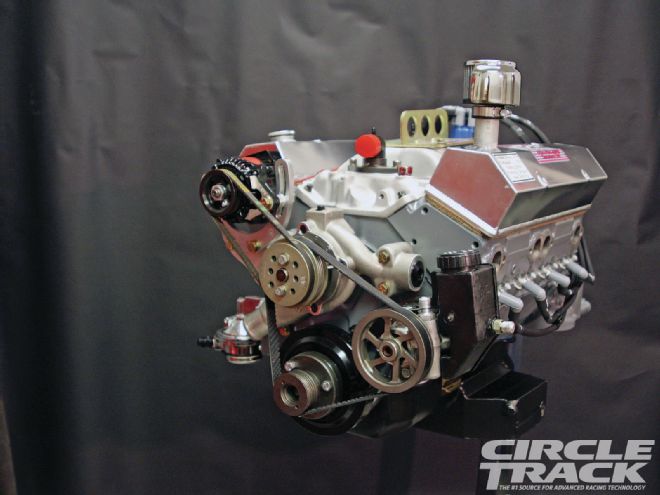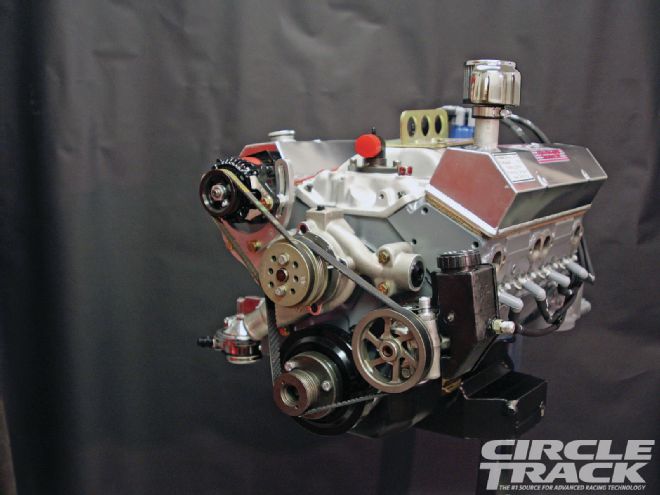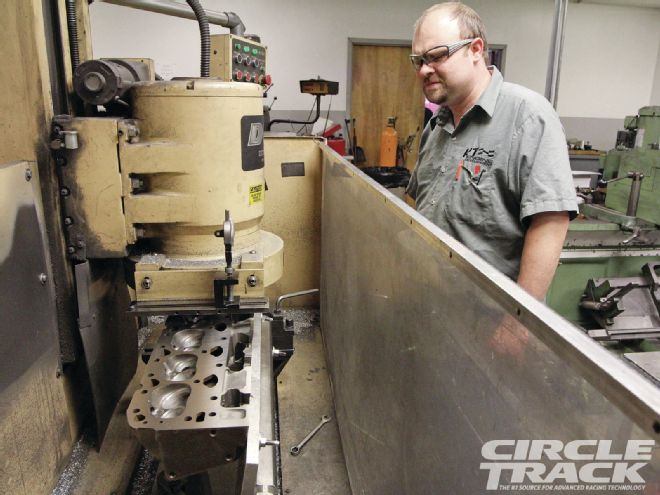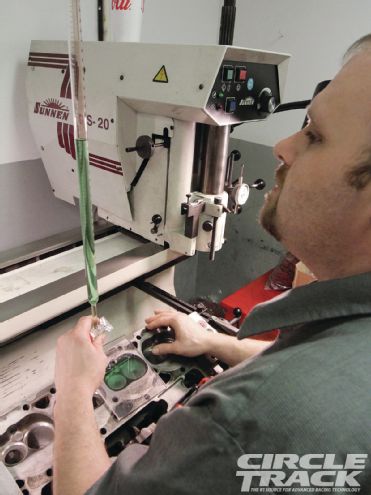
 The KT Engine Development house motor is freshly rebuilt and ready to be crated up and shipped from Concord, North Carolina, to our race shop in Florida.
The KT Engine Development house motor is freshly rebuilt and ready to be crated up and shipped from Concord, North Carolina, to our race shop in Florida.
For the first time ever, NASCAR is inviting the Late Model Stock drivers to compete on the surface at Daytona International Speedway.
Pretty cool, huh? No, the LM Stocks won't be running the full 21/2-mile circuit, which, probably would make for pretty boring racing with these cars. Instead, NASCAR will be building a 4/10-mile asphalt track on the backstretch covering both the racing surface and the smooth asphalt runoff area. Besides the NASCAR Late Model Stock cars (aka the Whelen All-American Series), NASCAR will also be holding races for the K&N Pro Series cars and the Whelen Modified Tour on the Monday and Tuesday between Sunday's Daytona 500 qualifying and the Budweiser Duels held on Thursday.
They are calling this little event the UNOH Battle at the Beach, and as soon as we heard about it we knew we wanted in on it. NASCAR is only reserving spots for champions, but it's allowing competitors to race their way into the main event. The first step was to pull the old CT LMS chassis out of storage. The chassis may no longer be the latest and greatest thing out there, but it has always been good to us and we like it. The bigger issue when we dusted off the old chassis was the lack of any type of motivation in the form of an engine.
 1. Heat cycles will move the metal in both the heads and the deck of the block. To greatly reduce the chance of a blown head gasket, cylinder head specialist Kevin Troutman decks both the heads and the race block before reassembly. This engine hadn’t suffered any damage or overheating, so only a few thousandths of an inch of material was required to be removed to square the decks back up.
1. Heat cycles will move the metal in both the heads and the deck of the block. To greatly reduce the chance of a blown head gasket, cylinder head specialist Kevin Troutman decks both the heads and the race block before reassembly. This engine hadn’t suffered any damage or overheating, so only a few thousandths of an inch of material was required to be removed to square the decks back up.
We figured that cutting holes in the floorpan and going around the track Fred Flintstone style wouldn't be very competitive, so we knew we needed a new race engine to go with the car. Thankfully, Ken Troutman of KT Engine Development volunteered a NASCAR Late Model Stock-legal loaner engine we could use for the race.
Troutman's house motor had just completed a full season of racing and, not wanting to send a worn out motor to Daytona, he said we needed to wait a couple days while the engine went through a refresh. Rebuilds will vary depending on what's worn or broken, but this particular engine received updates mostly to the top end, including a new cam and lifters, springs, valves, ignition, wires and rockers.
Because we always like hanging around race and engine shops, we thought we'd document the updates that Ken chose to make to this modern NASCAR Late Model Stock racing engine. We're not hitting every step of the engine build here, just highlighting some of the more interesting points. We followed this rebuild all the way through to the dyno test, but stay tuned as we actually race it in the UNOH Battle at the Beach in the coming months.
 2. Troutman also touched up the intake and exhaust valve seats to make sure the cylinders were still sealing optimally. One of the keys to making power with an LMS engine is maximizing the compression ratio. With the required flat-top pistons, that comes down to making sure the combustion chambers are sized right at the 62cc minimum. Both decking the heads and cutting valve seats (which raises the valves into the chambers) can affect combustion chamber volume, so Troutman checks cylinder head volume several times during the process of his machine work to make sure they are still very close to that 62cc line without going into illegal territory.
2. Troutman also touched up the intake and exhaust valve seats to make sure the cylinders were still sealing optimally. One of the keys to making power with an LMS engine is maximizing the compression ratio. With the required flat-top pistons, that comes down to making sure the combustion chambers are sized right at the 62cc minimum. Both decking the heads and cutting valve seats (which raises the valves into the chambers) can affect combustion chamber volume, so Troutman checks cylinder head volume several times during the process of his machine work to make sure they are still very close to that 62cc line without going into illegal territory.
The Dyno Sheet
NASCAR Late Model Stock race engines are severely limited by the required two-barrel carburetor and the dual-plane intake with a very small plenum volume. If any engine builder tells you his LMS engine is making 500 horsepower legally, he or she needs to get his engine dyno recalibrated. But what we do like about this engine build is the broad torque curve which will help the race car accelerate out of the turns very well.
RPM Torque Horsepower 3,800 448 324.1 3,900 448.4 333 4,000 450.9 343.4 4,100 459.9 351.2 4,2,00 450.3 360.1 4,300 448.5 367.2 4,400 444.1 372 4,500 442.2 378.9 4,600 443.5 383.2 4,700 438.2 392.1 4,800 433.2 395.9 4,900 431.7 402.7 5,000 426.1 405.7 5,100 430 417.6 5,200 427.2 423 5,300 422.8 426.6 5,400 415.7 427.4 5,500 411.7 431.2 5,600 408.4 435.5 5,700 404.7 439.2 5,800 400.3 442 5,900 394.2 442.8 6,000 390.2 445.8 6,100 383.2 445.1 6,200 378.3 446.6 6,300 370.1 444 6,400 360.1 442.5 6,500 362.1 448.1 6,600 353.9 444.7 6,700 344.9 440 6,800 337.5 437